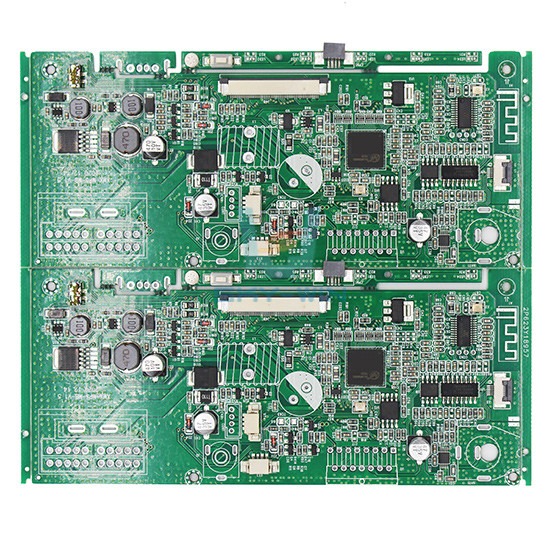Shenzhen Sky-Win Technology Co., Ltd |
|
Verified Suppliers
|
|
SMT One Stop PCB Assembly Service ISO9001 Quick Turn PCB Green Solder Mask Prototypes
SMT Stencil Used In The PCB Design
Surface Mount Technology (SMT) templates are made of a thin,
flexible material with openings corresponding to the pads of the
components and holes in the PCB. The opening in the template allows
conductive ink to flow during PCB etching. They are a great way to
quickly and accurately apply solder paste to the pad on the circuit
board. PCB templates help save money, improve quality and speed up
the manufacturing process. Templates can be used for single or
multi-layer boards, as well as multi-layer large boards. At Sky
Win, we offer a wide range of rugged SMT Stencils to suit your
specific manufacturing needs, manufacturing methods and components
used in your board.
SkyWin SMT Assembly Capability
We have the capabilities to assemble SMT prototype PCBs in small
production runs with manual and/or automated SMT production
processes, including single- or double-sided component insertions.
Our production facilities can assemble the following SMT types:
Ball Grid Array (BGA)
Ultra-Fine Ball Grid Array (uBGA)
Quad Flat Pack No-Lead (QFN)
Quad Flat Package (QFP)
Small Outline Integrated Circuit (SOIC)
Plastic Leaded Chip Carrier (PLCC)
Package-On-Package (PoP)
Small Chip Packages (0.2mm pitch )
Main SMT Machines in PCBWay
Automatic Solder Paste Printer
Reflow Soldering Machine
Pick & Place Machine
Manufacturing Capabilities: PCB Assembly Manufacturer, Solder Paste Printing, Reflow Soldering, AOI, and X-ray Inspection
SMT PCB Assembly Technical Parameters
| Items | PCBA capacity |
| Product name | SMT circuit board manufacturer custom electronic assembly pcb pcba |
| Assembly details | SMT and Thru-hole, ISO SMT and DIP lines |
| Testing on products | Testing jig/mold , X-ray Inspection, AOI Test, Functional test |
| Quantity | Min quantity : 1pcs. Prototype, small order, mass order, all OK |
| Files needed | PCB : Gerber files(CAM, PCB, PCBDOC) |
| Components : Bill of Materials(BOM list) | |
| Assembly : Pick-N-Place file | |
| PCB Panel Size | Min size : 0.25*0.25 inches(6*6mm) |
| Max size : 1200*600mm | |
| Components details | Passive Down to 0201 size |
| BGA and VFBGA | |
| Leadless Chip Carriers/CSP | |
| Double-sided SMT Assembly | |
| Fine BGA Pitch to 0.2mm(8mil) | |
| BGA Repair and Reball | |
| Part Removal and Replacement | |
| Component package | Cut Tape, Tube, Reels, Loose Parts |
| PCB+ assembly process | Drilling-----Exposure-----Plating-----Etaching & Stripping-----Punching-----Electrical Testing-----SMT-----Wave Soldering-----Assembling-----ICT-----Function Testing-----Temperature & Humidity |
What is Surface Mount Technology (SMT) PCB assembly process?
The Surface Mount Technology (SMT) PCB assembly process is a widely used method for assembling printed circuit boards (PCBs) that involves mounting surface mount components directly onto the PCB surface. Here are the key steps involved in the SMT PCB assembly process:
1. Stencil Printing: A solder paste stencil is aligned and placed over the PCB. Solder paste, a mixture of tiny solder particles and flux, is applied to the stencil and forced through the apertures onto the PCB pads using a squeegee. The solder paste is applied only to the specific areas where components will be mounted.
2. Component Placement: Automated pick-and-place machines are used to accurately and precisely place surface mount components onto the PCB. These machines pick components from reels, trays, or tubes and place them onto the designated pads on the PCB according to the component placement data provided.
3. Reflow Soldering: Once the components are placed, the PCB is transferred to a reflow oven. The oven uses controlled heat to melt the solder paste, forming solder joints that connect the components to the PCB pads. The oven has a specific temperature profile, including preheating, soaking, and reflow stages, to ensure proper soldering without damaging the components.
4. Inspection: After reflow soldering, the PCB undergoes inspection for quality control. Automated Optical Inspection (AOI) machines or manual inspection is performed to check for solder defects, component placement accuracy, and other potential issues. Any defects or discrepancies are identified and can be rectified at this stage.
5. Secondary Assembly: If there are through-hole components or connectors that cannot be mounted using SMT, they are typically inserted and soldered using wave soldering or selective soldering processes. This step ensures that all components are properly mounted and connected.
6. Cleaning: Some PCB assemblies require cleaning to remove flux residues or other contaminants that may be left after the soldering process. Cleaning can be done using various methods such as ultrasonic cleaning, water-based cleaning, or solvent cleaning, depending on the specific requirements and constraints.
7. Testing and Quality Assurance: The assembled PCBs undergo functional testing, in-circuit testing (ICT), or other testing methods to ensure that they meet the required specifications and functionality. This step helps identify any defects or issues that may have been missed during earlier inspections.
8. Final Inspection and Packaging: The PCB assemblies undergo a final inspection to ensure they meet the required quality standards. Once approved, they are prepared for packaging, which may include adding protective coatings, labeling, or packaging them in antistatic packaging for shipment.
The SMT PCB assembly process offers several advantages, including high component density, improved manufacturing efficiency, and compatibility with automated assembly equipment. It is widely used in various industries, including consumer electronics, automotive, telecommunications, and medical devices.
